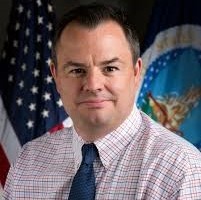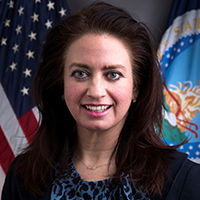On March 8, 2021, the U.S. Department of Agriculture (USDA) announced it had completed its review of the Final Rule establishing the U.S. Domestic Hemp Production Program. The rule, effective as of March 22, 2021, includes provisions for the USDA to approve hemp production plans including requirements for maintaining information on the production methods, THC testing levels, disposal of non-compliant plant material, and licensing requirements.
After the release of the Final Rule, the USDA offered to brief the AOAC INTERNATIONAL Cannabis Analytical Science Program (CASP) community on the development of the Final Rule, differences between the Final Rule and the Interim Final Rule, and the rule’s implications for hemp growers and laboratories.
On July 14, 2021, Bill Richmond, Chief of the USDA Hemp Program, and Kerry Smith, Director of the Laboratory Approval and Testing Division (LATD), joined AOAC for a live webinar. The session kicked off with an overview of the Hemp Production Program, housed in the Agricultural Marketing Service (AMS). AMS provides services related to quality grading and inspection, market news, research and promotion, and commodity purchasing; it does not have a law enforcement capability.
The USDA Hemp Program regulates the production of hemp (cannabis containing 0.3% or less THC content) by state programs, tribal programs, and licensed individual hemp growers. The 2014 Farm Bill established a pilot program for states and institutes of higher education to study hemp production. After the 2018 Farm Bill uncoupled hemp from marijuana and removed it from the Controlled Substances List, the USDA held a variety of public meetings before issuing the Interim Final Rule (IFR), the first draft of national hemp regulations.
The USDA requested public comments and feedback on the IFR, and AOAC served as a resource for the Agency’s process leading to the Final Rule (FR).
The webinar was moderated by Toby Astill of PerkinElmer, Chair of the AOAC/CASP Training and Education Working Group, and AOAC’s Chris Dent provided updates on CASP. For more information about the USDA Hemp Production Program’s Final Rule, visit https://www.ams.usda.gov/rules-regulations/hemp.

Bill Richmond, Chief, USDA Hemp Program, leads the team responsible for establishment and implementation of the U.S. domestic hemp production program. The USDA program oversees State and Tribal Government hemp regulations, rulemaking, intergovernmental affairs and stakeholder outreach. He has been in Federal service, all with USDA, for over 20 years. In other roles, he was the acting director of the team responsible for establishing new labeling rules for genetically modified foods in the U.S., served as the chief of staff of USDA’s Agricultural Marketing Service under the Obama and Trump administrations, and led USDA’s Colorado dairy field office. Richmond studied agricultural economics at the University of Maryland, and holds professional certificates from the Harvard Kennedy School of Government and the Brookings Institution.

Kerry Smith, Ph.D., is the Director of the Laboratory Approval and Testing Division (LATD). LATD provides laboratory testing and approval services to facilitate domestic and international marketing of food and agricultural commodities. Kerry was critical in the reorganization and standardization of the Agricultural Marketing Services’ (Agency) laboratory services. She has led significant process and service enhancements, making LATD a leader in residue, mycotoxin, and adulteration testing. In addition, LATD serves as the scientific arm of the Agency, providing subject matter expertise in many areas, including bioengineered foods and hemp production. Kerry has worked for the United States Department of Agriculture (USDA) for 16 years.